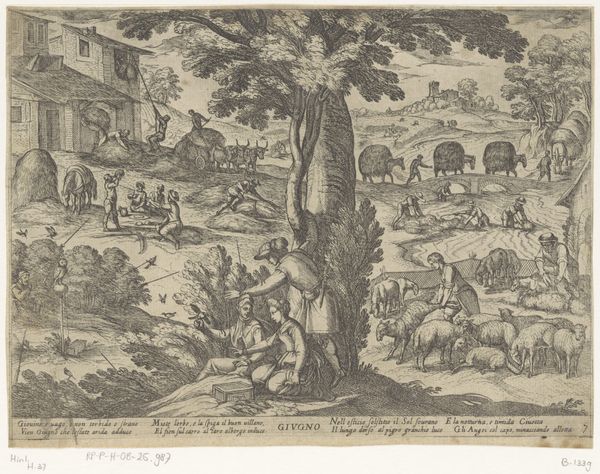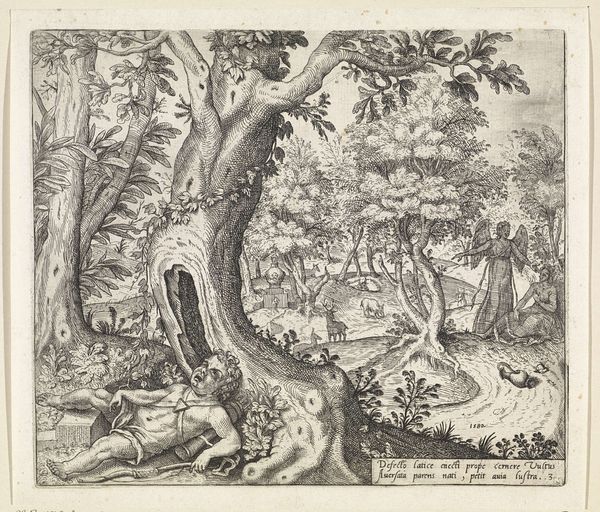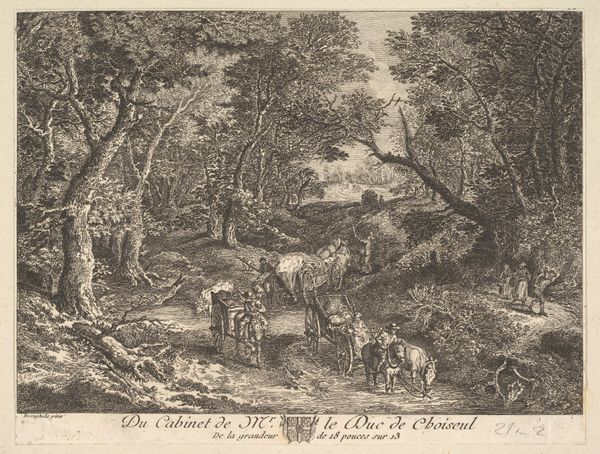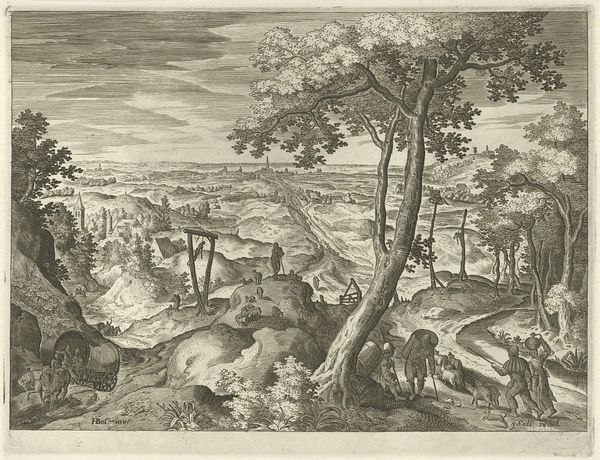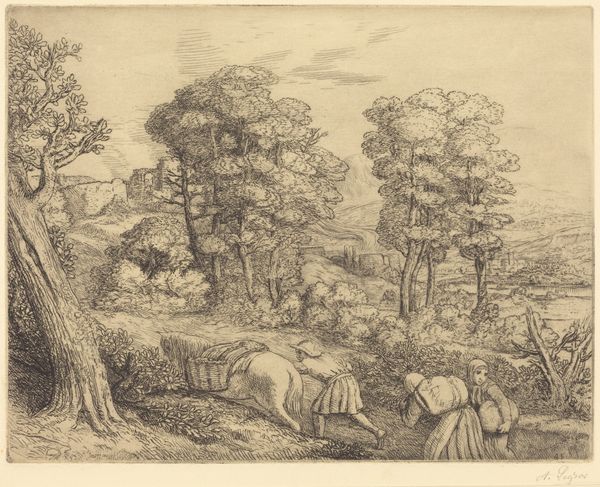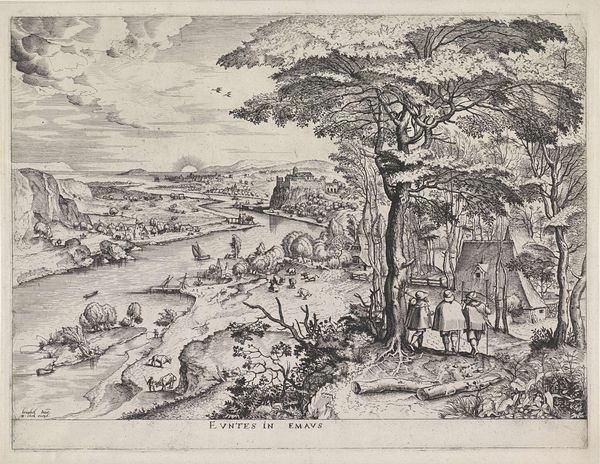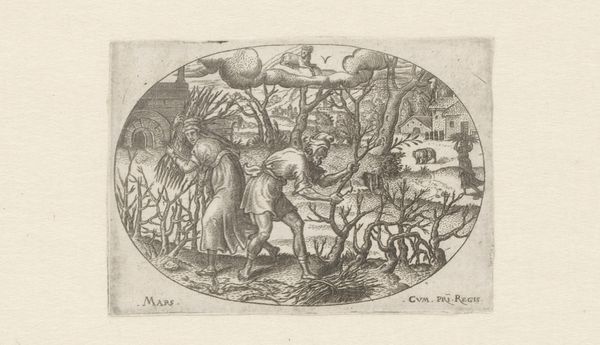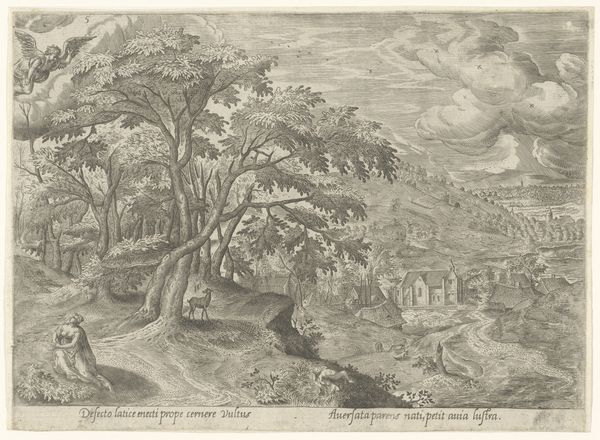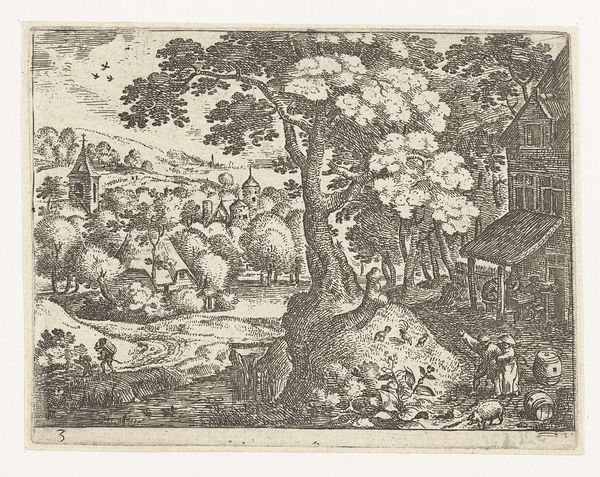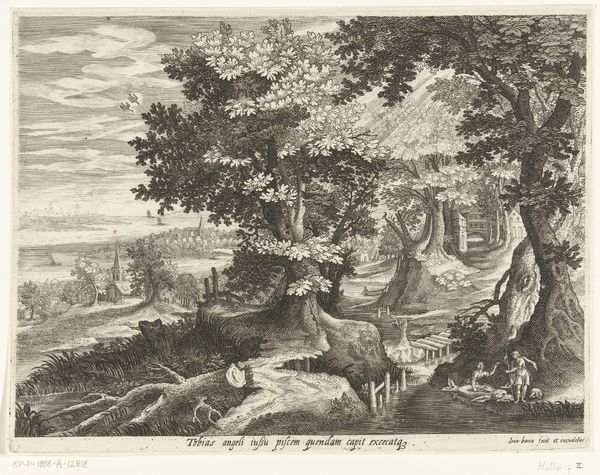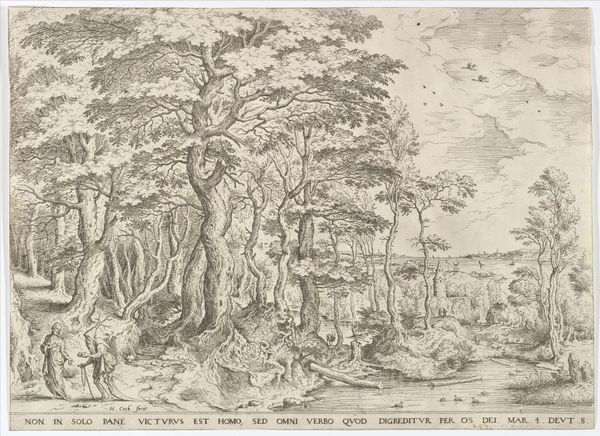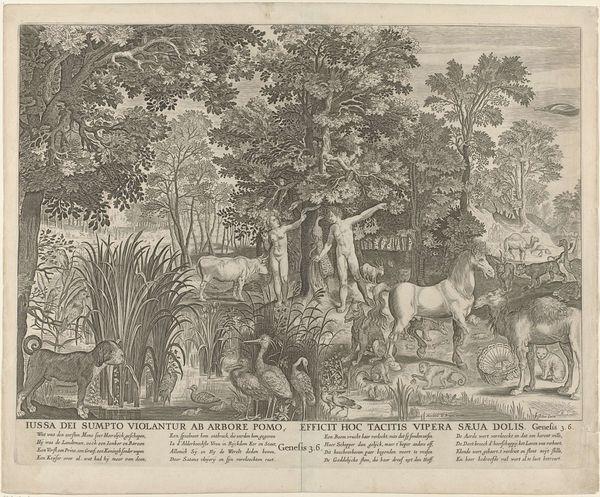
drawing, print, etching, engraving
#
drawing
#
narrative-art
# print
#
etching
#
landscape
#
line
#
northern-renaissance
#
engraving
#
realism
Dimensions: height 323 mm, width 428 mm
Copyright: Rijks Museum: Open Domain
Curator: Let’s turn our attention to "Bebost Landschap," or "Wooded Landscape," created sometime between 1553 and 1558. The Rijksmuseum is lucky to have this engraving, etching and print, rendered in line, by Johannes or Lucas van Doetechum. What strikes you first about this detailed landscape scene? Editor: I’m immediately pulled into its busyness, its feeling of being overwhelmed, but also, oddly enough, comforted by that sensation. There's something about the meticulous detail, all those tiny etched lines building up this little world. It almost feels…alive. Curator: That’s a fascinating way to put it, because what you're reacting to is precisely what would have made this piece significant. Landscapes, as their own subjects, independent from religious or historical narratives, were still gaining traction. Artists started depicting scenes not just as backdrops, but as reflections of societal values—in this case, perhaps the growing Dutch appreciation for the natural world and burgeoning mercantile activity in the countryside. Editor: Ah, so it's not just about trees and brooks then, right? It feels very Northern Renaissance; almost hyper-real with the inclusion of little everyday details like the folks traversing the waterway. Were there any kind of political connotations implicit within similar pieces during this period? Curator: The period's politics are inseparable from such depictions. The land wasn’t just something beautiful, it was also a source of economic power and a symbol of national identity. Notice how this print includes figures working and traveling. We have what looks like a wagon crossing a stream. These are subtle nods to Dutch industry and resourcefulness. But it also underscores the era's social stratification and labor roles in relation to resources. Editor: Yes, the composition definitely drives home that intersection between industry and the natural setting, not necessarily separate from one another at all. To me, there is a strong tension that stems from how manicured and structured that little society appears even though the artist depicts a very open, ostensibly untamed wooded setting. Curator: You are pointing out a very crucial aspect. While seemingly observational, "Bebost Landschap" serves as a manufactured image, one reflecting and promoting particular ideas about nation, nature and industriousness in a rapidly evolving society. Editor: Ultimately then, although grounded within elements of "realism," there’s an allegorical underpinning to this piece beyond its appeal to the senses and Northern Renaissance sensibilities. Something to ponder even with such quaint subject matter and medium.
Comments
No comments
Be the first to comment and join the conversation on the ultimate creative platform.
